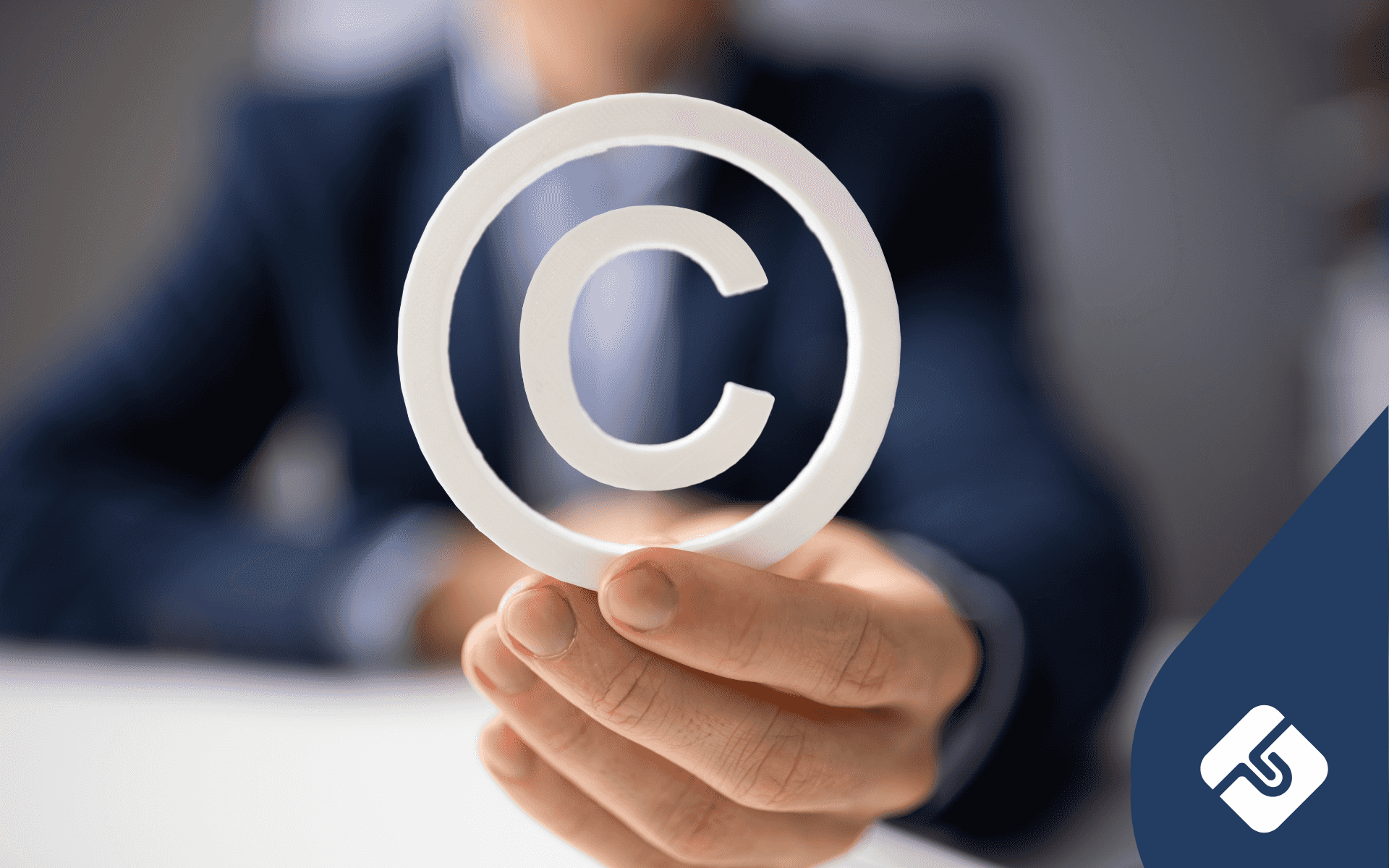Sydney-based lawyer, focusing on superannuation and investments law. . Formerly Legal Intern at Lawpath.
Are you a creative professional in Australia struggling to protect your work? You’re not alone. Many artists, writers, and content creators find themselves grappling with the complexities of copyright law, unsure how to protect their intellectual property.
This comprehensive guide will walk you through the legal aspects of copyright in Australia so you can protect your creative works and understand your rights.
Table of Contents
What is copyright?
While copyright is a commonplace term, it can be tricky to understand what it actually entails. In essence, copyright is an intangible form of property; it is a bundle of exclusive economic rights to do certain things with copyright subject matter. These rights include the following:
- Right to copy
- Right to publish
- Right to communicate
- Right to publicly perform
The Copyright Act 1968 is Australia’s primary law that governs everything related to copyrights. The Act outlines the rights of copyright holders and the types of works protected.
In Australia, copyright is automatically applied as soon as an idea is expressed in a tangible form. For example, if you write down or record an idea, it is automatically copyrighted. This means that you do not have to register an idea for copyright protection to take effect.
However, the copyright protects the expression of ideas, not the ideas themselves. For example, while a specific written story is protected by copyright, the general plot idea is not.
What can I copyright?
Under Australian law, you can copyright a wide range of creative works.
- Literary works: books, articles, essays, poems, websites, and even computer programs
- Artistic works: paintings, drawings, sculptures, photographs, and architectural designs
- Musical works: compositions and song lyrics
- Dramatic works: plays, screenplays, and choreographic works
- Films and videos: movies, documentaries, and other audiovisual productions
- Sound recordings: musical recordings and podcasts
- Broadcasts: television and radio broadcasts
- Published editions: the typographical arrangement of published works
However, it’s crucial to understand that not everything can be copyrighted. The following are generally not protected by copyright:
- Ideas or concepts (only their expression is protected)
- Titles, names, slogans, or short phrases (these may be protected by trademark law instead)
- Facts or information
- Styles or techniques
- Works that are already in the public domain
Remember, for a work to be eligible for copyright protection, it must be original and expressed in a material form. The level of creativity or artistic merit is not a factor in determining copyright eligibility.

Get on demand legal advice for one low monthly fee.
Sign up to our Legal Advice Plan and access professional legal advice whenever you need it.
Who owns the copyright?
In Australia, copyright ownership is generally straightforward. In general, the author of the work is the owner of the copyright. That said, you should consider the following nuances.
- Individual creators: By default, the work’s creator is the first owner of the copyright. This applies to freelancers and independent contractors who create works for clients unless there’s a written agreement stating otherwise.
- Employees: When an employee creates a work as part of their job, the employer typically owns the copyright. However, this can vary depending on the employment contract and the nature of the work created.
- Commissioned works: For commissioned works, ownership can depend on the type of work and the agreement between parties. For example, in the case of photographs, portraits, and engravings, the commissioner (client) is usually the copyright owner unless agreed otherwise.
- Joint ownership: When two or more people collaborate on a work, they may become joint owners of the copyright. Each co-owner has the right to exercise their copyright independently, but they cannot license or assign the work without the agreement of all co-owners.
- Government: For works created under the direction or control of the Australian government, the copyright is typically owned by the government.
It’s important to note that copyright ownership can be transferred or assigned through written agreements. This is common in publishing contracts, where authors may assign their copyright to publishers in exchange for royalties. The agreement may also dictate the operation of moral rights, which are further explained below.
How long does copyright last?
The duration of copyright protection in Australia depends on the type of work and when it was created or published.
- Literary, dramatic, musical, and artistic works: Generally, copyright lasts for the life of the creator plus 70 years after their death. For works published anonymously or under a pseudonym, copyright lasts for 70 years from the year of first publication.
- Sound recordings and cinematograph films: Copyright lasts for 70 years from the year of first publication.
- Broadcasts: Copyright lasts for 50 years from the year the broadcast was made.
- Published editions: Copyright in published editions of a work lasts for 25 years from the year of first publication.
The laws around copyright duration have changed over the years. As such, works created before certain dates may have different copyright terms, as specified by law. Once the copyright term expires, the work enters the public domain, and anyone can use it freely.

Get a fixed-fee quote from Australia's largest lawyer marketplace.
What does copyright protect?
As a copyright owner, you have several exclusive rights.
- Reproduction right: You can make copies of the work.
- Publication right: You can make the work available to the public for the first time.
- Performance right: You have the right to perform the work in public (e.g., playing music or staging a play).
- Communication right: You can also communicate the work to the public (e.g., broadcasting or making it available online).
- Adaptation right: You have the right to create derivative works (e.g., translating a book or adapting a novel into a film).
These rights give you, the copyright owner, control over how your work is used. You may also have the chance to profit from your work. For example:
- An author can decide who can publish their book and under what terms.
- A musician can control who can perform their songs in public or use them in films.
- A photographer can determine who can reproduce their images and in what context.
You also have the option to license or assign these rights to others, either exclusively or non-exclusively. This allows copyright owners to monetise their work while retaining control over its use.
What rights does copyright give you?
Copyright in Australia grants creators a set of specific rights over their work.
Economic rights
You can financially benefit from your creations. Economic rights include:
- The right to reproduce the work
- The right to publish the work
- The right to perform the work in public
- The right to communicate the work to the public
- The right to make an adaptation of the work
- The right to commercially rent certain types of works
Moral rights
These rights protect the personal relationship between a creator and their work.
- The right of attribution: You have the right to be identified as the creator of the work.
- The right against false attribution: You have the right to prevent others from being falsely identified as the creator.
- The right of integrity: You have the right to prevent derogatory treatment of the work that prejudices the creator’s honour or reputation.
Licensing rights
As the copyright owner, you can grant permission to others to use their work through licensing agreements, which can encompass a range of rights to use or exploit the work. These can either be exclusive licenses that give sole rights to the licensee or non-exclusive licenses where multiple parties can use the work.
Assignment rights
You can also transfer ownership of your copyright to others, typically through a written agreement.
What does copyright infringement mean?
Copyright infringement occurs when someone uses copyrighted material without permission in a way that violates the copyright owner’s exclusive rights. In Australia, this can lead to serious legal and financial consequences.
Here are some common examples of copyright infringement:
- Unauthorised reproduction: copying a substantial part of a work without permission
- Illegal distribution: sharing copyrighted material online without authorisation
- Public performance without a license: playing music or showing films in public without proper licensing
- Creating unauthorised derivative works: adapting a copyrighted work without permission
The consequences of copyright infringement can be severe:
- Civil penalties: Courts can order damages to be paid to the copyright owner, which can be substantial.
- Account of profits: Infringers may be required to pay any profits they’ve made from using the copyrighted material.
- Injunctions: Courts can order the infringer to stop using the copyrighted material.
- Criminal penalties: In cases of commercial-scale infringement, individuals may face fines of up to $117,000 and imprisonment for up to 5 years.
Remember that ignorance is not a defense against copyright infringement. Even unintentional use of copyrighted material without permission can be considered infringement.
How to protect your copyrighted work
While copyright protection is automatic in Australia, there are steps you can take to strengthen your position and deter potential infringers.
- Use copyright notices: Include a copyright symbol ©, your name, and the year of creation on your work. While not legally required, it serves as a clear reminder of your rights.
- Keep records: Document your creative process and maintain records of when your work was created. This can be crucial if you need to prove ownership.
- Use digital watermarks: For digital works, consider using visible or invisible watermarks to identify your ownership.
- Monitor usage: Regularly search online for unauthorised use of your work.
- Use licensing agreements: When allowing others to use your work, always use clear, written licensing agreements that specify the terms of use.
- Educate others: Make sure those who work with your content understand your copyright and the limitations on its use.
- Consider joining a collecting society: Organisations like APRA AMCOS for music or Copyright Agency for text and images can help manage your rights and collect royalties.
- Act promptly on infringements: If you discover unauthorised use of your work, take action quickly. This might involve sending a cease and desist letter or seeking legal advice.
If you know or believe that your copyrighted work is being used improperly, it is best to get immediate legal help. A copyright lawyer will guide you through the process of addressing copyright infringement issues.
Want more?
Sign up for our newsletter and be the first to find hand-picked articles on topics that we believe are crucial to successfully scale your unique small business.
By clicking on 'Sign up to our newsletter' you are agreeing to the Lawpath Terms & Conditions
FAQ
Do I need to register my copyright in Australia?
No, copyright protection is automatic in Australia. As soon as you create an original work and express it in a tangible form, it’s protected by copyright.
Can I use copyrighted material for educational purposes?
Yes, but within limits. Australia has fair dealing exceptions for research, study, criticism, review, and news reporting. However, these have specific conditions and don’t cover all educational uses.
What’s the difference between copyright and trademark?
Copyright protects original creative works, while trademarks protect brands, logos, and distinctive signs used in trade. Trademarks require registration for full protection, unlike copyright.
Final thoughts
Understanding and protecting your copyright is crucial. As a creator in Australia, you have robust rights under the Copyright Act 1968, but it’s up to you to enforce them. Protect your creations with professional legal documents when granting usage and other rights to partners and stakeholders. And when in doubt, consult a professional lawyer to keep your creative works safe.
Don't know where to start?
Contact us on 1800 529 728 to learn more about customising legal documents, obtaining a fixed-fee quote from our network of 600+ expert lawyers or to get answers to your legal questions.






